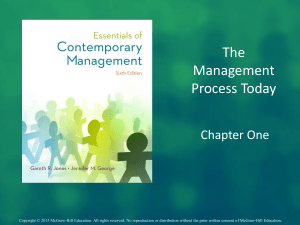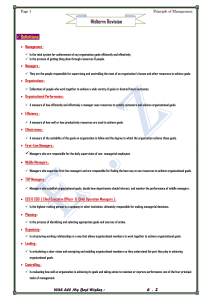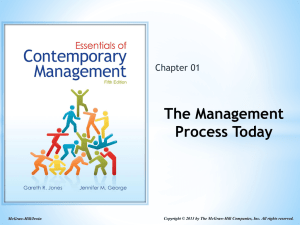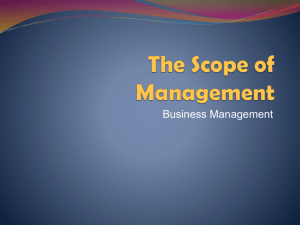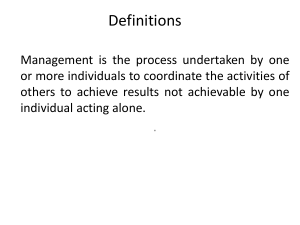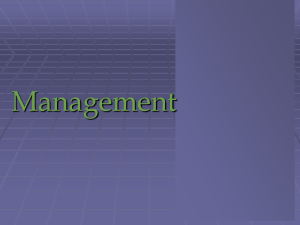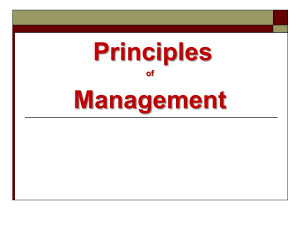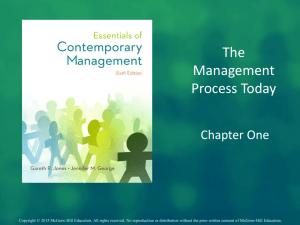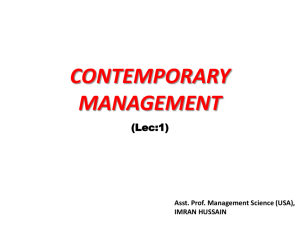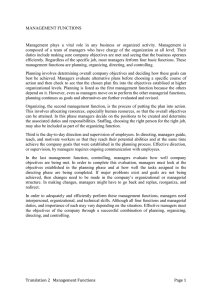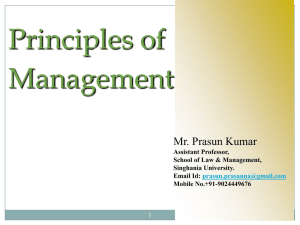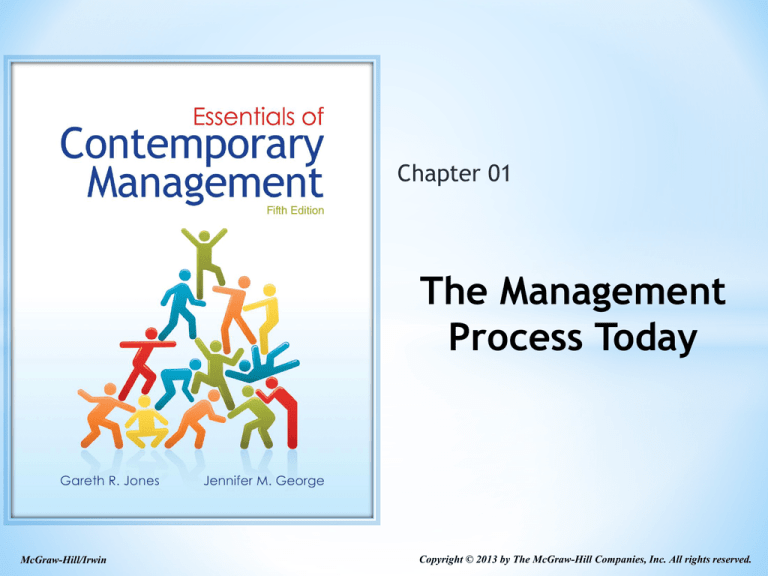
Chapter 01
The Management
Process Today
McGraw-Hill/Irwin
Copyright © 2013 by The McGraw-Hill Companies, Inc. All rights reserved.
Learning Objectives
• Describe what management is, why management is
important, what managers do, and how managers
use organizational resources efficiently and
effectively to achieve organizational goals
• Distinguish among planning, organizing, leading,
and controlling (the four principal managerial
tasks), and explain how managers’ ability to handle
each one affects organizational performance
1-2
Learning Objectives
• Differentiate among three levels of management,
and understand the tasks and responsibilities of
managers at different levels in the organizational
hierarchy
• Distinguish among three kinds of managerial skill,
and explain why managers are divided into
different departments
1-3
Learning Objectives
• Discuss some major changes in management
practices today that have occurred as a result of
globalization and the use of advanced information
technology (IT)
• Discuss the principal challenges managers face in
today’s increasingly competitive global
environment
1-4
What is Management?
• Management: The planning, organizing, leading,
and controlling of human and other resources to
achieve organizational goals effectively and
efficiently
• Organizations: Collections of people who work
together and coordinate their actions to achieve a
wide variety of goals
1-5
Achieving High Performance
• Organizational performance: A measure of how
efficiently and effectively managers use
organizational resources to satisfy customers and
achieve goals
1-6
Figure 1.1 - Efficiency, Effectiveness,
and Performance in an Organization
1-7
Figure 1.2 - Four Tasks of Management
1-8
Levels and Skills of Managers
• First-line manager: Responsible for the daily
supervision of nonmanagerial employees
• Middle manager: Supervises first-line managers
and finds the best way to use resources to achieve
organizational goals
• Top manager: Establishes organizational goals,
decides how departments should interact, and
monitors the performance of middle managers
1-9
Top-Management Team
• Group composed of the CEO, COO, and the heads of
the most important departments
• Play a crucial role in determining an organization’s
long-term performance
1-10
Figure 1.4 - Relative Amount of Time That
Managers Spend on the Four Managerial Tasks
1-11
Managerial Skills
• Conceptual skills: Ability to analyze and diagnose a
situation and distinguish between cause and effect
• Human skills: Ability to understand, alter, lead,
and control the behavior of other individuals and
groups
• Technical skills: The job-specific knowledge and
techniques required to perform an organizational
role
1-12
Recent Changes in Management
Practices
• Restructuring: Downsizing an organization by
eliminating the jobs of large numbers of top,
middle, and first-line managers and nonmanagerial
employees
• Outsourcing: Contracting with another company,
usually abroad, to have it perform an activity the
organization previously performed itself
1-13
Recent Changes in Management
Practices
• Empowerment: The expansion of employees’
knowledge, tasks, and decision-making
responsibilities
• Self-Managed Teams: A group of employees who
assume responsibility for organizing, controlling,
and supervising their own activities
1-14
Challenges for Management in
a Global Environment
• Building a competitive advantage
• Maintaining ethical standards
• Managing a diverse workforce
• Utilizing new information systems and technologies
• Practicing global crisis management
1-15

